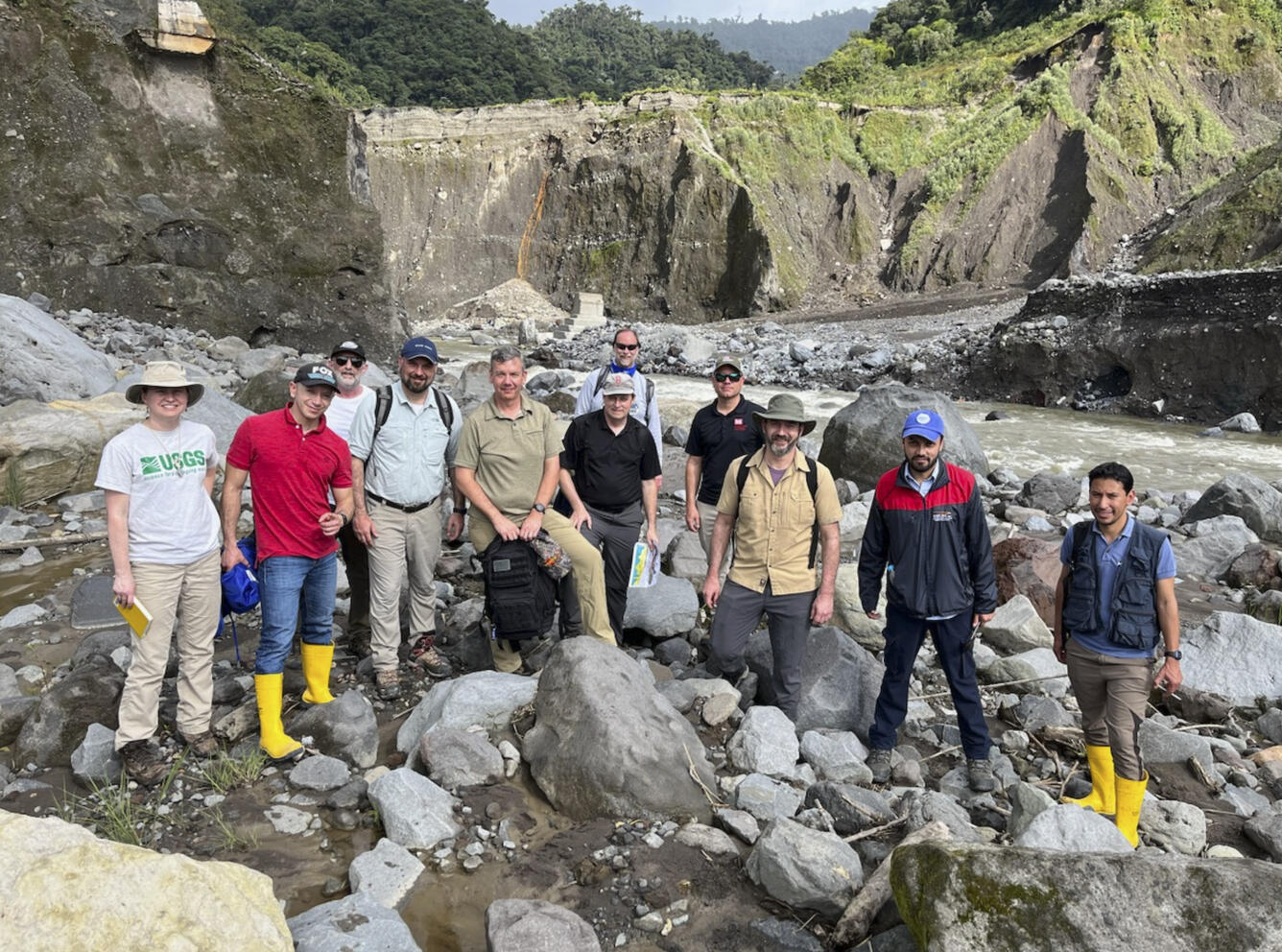Federal Scientists Assess Unusual River-Erosion Disaster in Ecuadorian Amazon
An international, interagency team of scientists traveled to rural Ecuador to assess an unusual and catastrophic geohazard: the collapse of a 144-meter-tall (472 foot) lava dam on the Rio Coca, which triggered massive erosion along the river.
Scientists from the U.S. Geological Survey, U.S. Army Corps of Engineers, and Bureau of Reclamation traveled to rural Ecuador to work with scientists from the Corporacion Electrica del Ecuador (CELEC) in assessing an unusual and catastrophic geohazard: the collapse of a 144-meter-tall (472 foot) lava dam on the Rio Coca, which triggered massive erosion along the river that has damaged critical infrastructure (roads, buildings, pipelines) and cut off transportation corridors to local communities.
Before 2020, the Rio Coca cascaded over a lava dam as the famous San Rafael waterfall, Ecuador’s tallest. Over several months, a large sinkhole formed just upstream of the waterfall. The river re-routed through the sinkhole on February 2, 2020, undercutting the lava dam (which collapsed in 2021) and triggering major retrogressive erosion that has been migrating upstream for the past three years, eating into the riverbed and surrounding valley walls, and potentially threatening the country’s largest hydroelectric dam, less than 10 kilometers upstream of the present erosion front.
“A lava-dam collapse of this scale was previously known only in the prehistoric sense, such as the paleo-lava dams in western Grand Canyon that blocked the Colorado River—none of them formed, collapsed, or were overtopped during historic time,” said USGS Research Geologist Amy East, who was part of the team of U.S. scientists visiting Ecuador in February 2023. “The catastrophic collapse of the Rio Coca lava-dam is unprecedented in modern history.”
A lava-dam functions much like a human-made dam, impounding water and sediment behind it. Thus, the closest analog to lava-dam failure is thought to be human-made dam failure or removal. When dams come down, they release the sediment stored behind them—sometimes very quickly, and in enormous volumes.
“Over the three years since the lava dam collapsed, approximately 500 million tons of sediment has migrated down the Rio Coca,” said East, who has studied sediment flux during several large dam removals, including those on the Elwha River, Washington. “Compare this to the Elwha River, which moved 20 million tons of sediment in a five-year span—a twentyfold difference. The total amount of sediment moved by the Rio Coca in three years is comparable to the total amount of sediment that entered rivers near Mount St. Helens after its 1980 eruption over 43 years.”
East and others on the international and interagency team applied modeling and remote-sensing techniques to better understand this rare disaster, predict its future evolution, and provide engineering solutions to mitigate risk.





